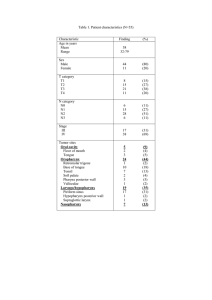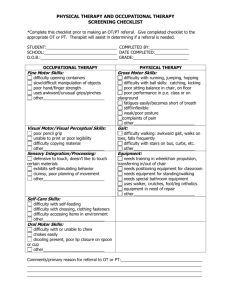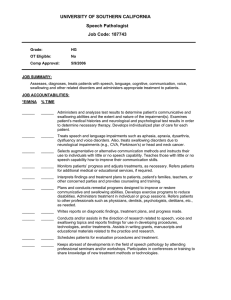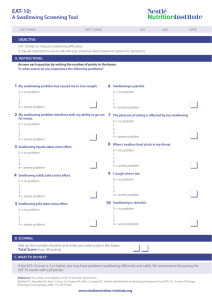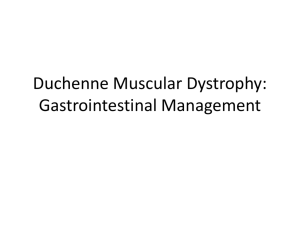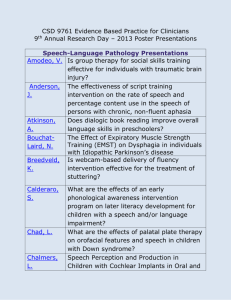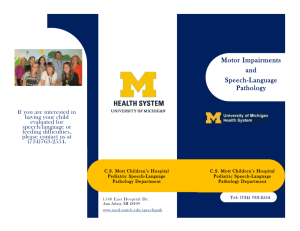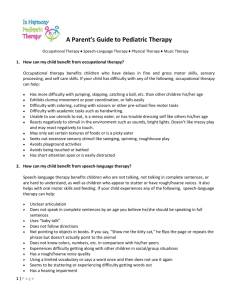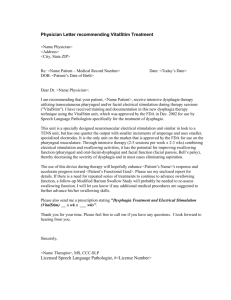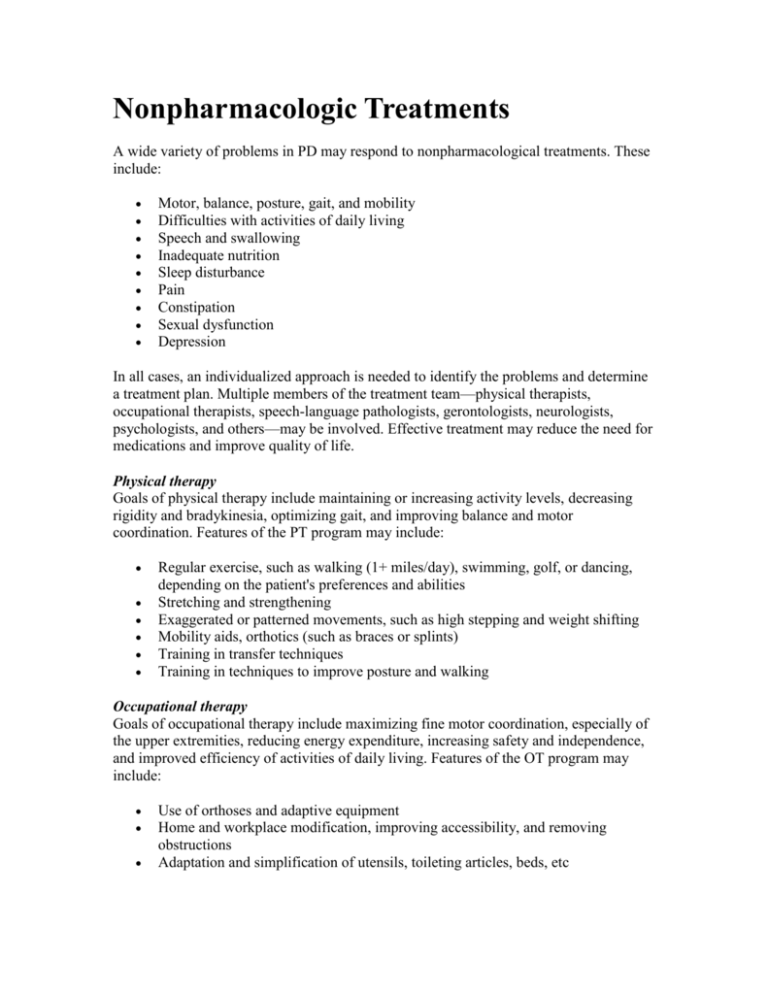
Nonpharmacologic Treatments
A wide variety of problems in PD may respond to nonpharmacological treatments. These
include:
Motor, balance, posture, gait, and mobility
Difficulties with activities of daily living
Speech and swallowing
Inadequate nutrition
Sleep disturbance
Pain
Constipation
Sexual dysfunction
Depression
In all cases, an individualized approach is needed to identify the problems and determine
a treatment plan. Multiple members of the treatment team—physical therapists,
occupational therapists, speech-language pathologists, gerontologists, neurologists,
psychologists, and others—may be involved. Effective treatment may reduce the need for
medications and improve quality of life.
Physical therapy
Goals of physical therapy include maintaining or increasing activity levels, decreasing
rigidity and bradykinesia, optimizing gait, and improving balance and motor
coordination. Features of the PT program may include:
Regular exercise, such as walking (1+ miles/day), swimming, golf, or dancing,
depending on the patient's preferences and abilities
Stretching and strengthening
Exaggerated or patterned movements, such as high stepping and weight shifting
Mobility aids, orthotics (such as braces or splints)
Training in transfer techniques
Training in techniques to improve posture and walking
Occupational therapy
Goals of occupational therapy include maximizing fine motor coordination, especially of
the upper extremities, reducing energy expenditure, increasing safety and independence,
and improved efficiency of activities of daily living. Features of the OT program may
include:
Use of orthoses and adaptive equipment
Home and workplace modification, improving accessibility, and removing
obstructions
Adaptation and simplification of utensils, toileting articles, beds, etc
Speech and swallowing
Low voice volume (hypophonia) often occurs in PD. Several PD-specific voice training
programs have been developed, which share an emphasis on consciously increasing voice
volume as a key strategy. Other features may include modification of speech patterns
such as use of shorter sentences, breathing exercises, and range-of-motion exercises for
the muscles of speech.
Drooling (sialorrhea) can be a common feature of advanced PD. The origin of the
problem is not in increased saliva production, but reduced spontaneity of swallowing.
Awareness of the problem, and consciously swallowing more often, may be effective. If
not, treatments may include a small dose of an anticholinergic medication under the
tongue, or injection of botulinum toxin into the salivary glands to temporarily paralyze
them. Both of these reduce saliva production.
Management of swallowing difficulties may include instruction to take smaller bites, to
completely empty the mouth before taking the next bite, and eating softer foods.
Sexuality
Sexual dysfunction affects a large proportion of patients with PD and their spouses.
Difficulties include erectile dysfunction in males, vaginal dryness, and loss of libido.
Hypersexuality from levodopa and dopamine agonists also occurs. Many PD patients are
reluctant to talk about these issues with their doctor, and may not connect the symptom to
the disease at all. There are useful treatments, both medical and nonmedical, for many of
these problems. Patients should always have a thorough urological or gynecological
evaluation to rule out non-PD related problems. Sildenafil (Viagra®) has been shown to
be safe and effective in men in PD to treat erectile dysfunction.
Driving
PD patients tend to do worse than controls on tests of driving safety, because of increased
reaction times and movement times caused by PD. Vehicular control skills are generally
well preserved, but attention to safety landmarks declines. Decline in performance seems
to be related to a worsening of motor abilities. Patients tend not to be good judges of their
loss of driving safety, and family members may need to intervene. A good way to
determine driving capability is to have the patient undergo a driving examination at a
rehabilitation facility.
Constipation
A good bowel regimen can greatly reduce constipation. Increased fluid intake, a diet rich
in vegetables and fruits, use of stool softeners, and increased dietary and/or supplemental
fiber are just some interventions that can help. Working with one's physician and/or a
gastroenterologist is the approach to take.

